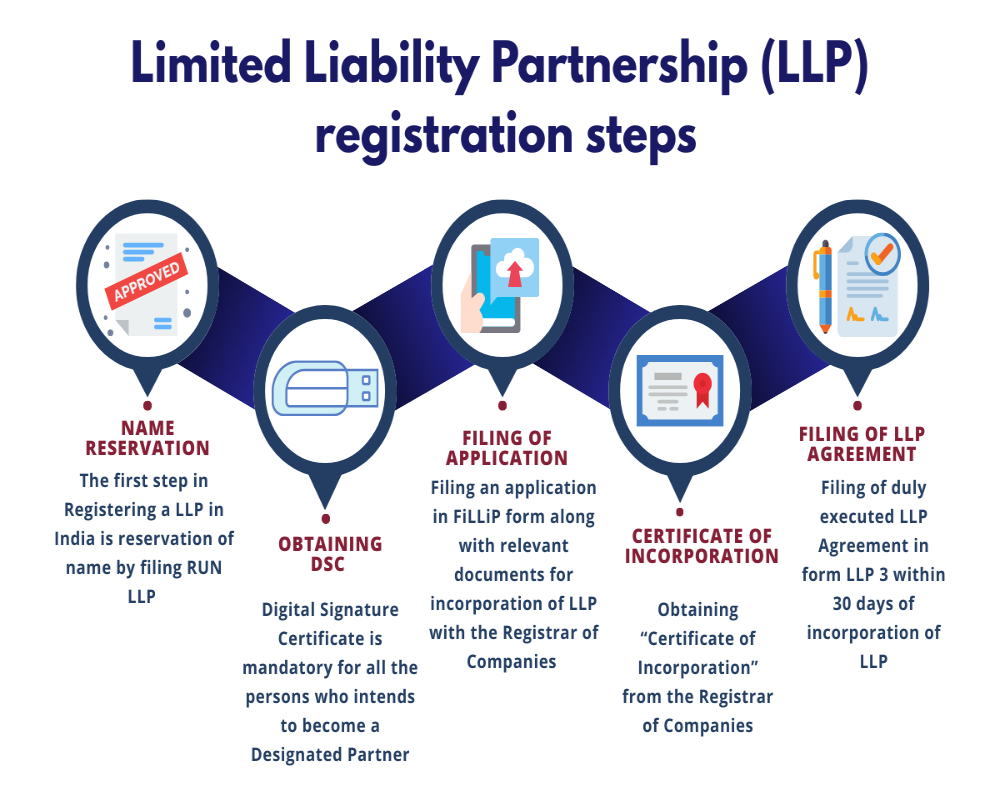Publish: September 4, 2025
What are the steps involved in LLP registration?
Partner Identification
- Ensure a minimum of two partners, with at least one being a resident of India.a
- Each partner must obtain a Designated Partner Identification Number (DPIN)
- A valid Digital Signature Certificate (DSC) is required for filing.g
- Partners must be competent under Indian law to enter into a contract.
- Identity and address proofs of all partners must be collected and verified.d
Name Approval
- Select a unique name for the LLP that complies with the naming guidelines issued by the MCA.
- Apply for name reservation through the RUN-LLP (Reserve Unique Name) service on the MCA portal.
- Ensure the name includes the suffix “LLP” or “Limited Liability Partnership”
- Avoid names that are identical or too similar to existing entities.
- Once approved, the name is reserved for 90 days.
Incorporation Filing
- File the FiLLiP form (Form for Incorporation of Limited Liability Partnership) on the MCA portal.l
- Include details of designated partners, registered office, and partner consent.s
- Attach identity documents, DSC, and proof of address.
- Submit incorporation fees as per the LLP contribution amount.t
- Upon approval, a Certificate of Incorporation is issued by the Registrar.
LLP Agreement
- Draft the LLP Agreement outlining the rights, duties, and responsibilities of partners.
- The agreement must be executed on non-judicial stamp paper as per applicable state law.
- File Form 3 on the MCA portal within 30 days of incorporation
- Include clauses related to profit sharing, partner roles, and dispute resolution.n
- Ensure the agreement is signed by all partners.
Post-Registration Formalities
- Apply for the LLP’s Permanent Account Number (PAN) and Tax Deduction and Collection Account Number (TAN)
- Open a bank account in the name of the LLP
- Register for Goods and Services Tax (GST) or other licenses if applicable.
- Maintain proper books of accounts and statutory records.
- Begin business operations in compliance with all regulatory norms.


0 Comments